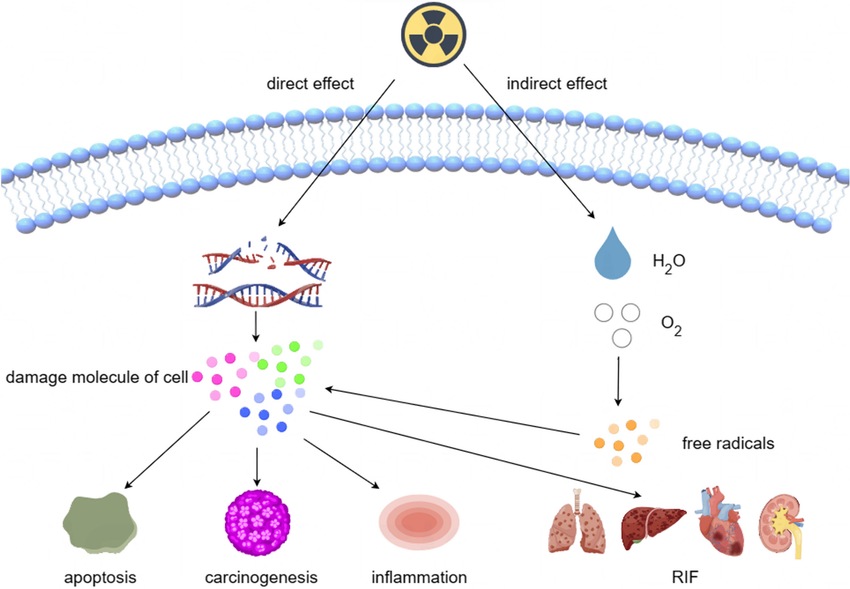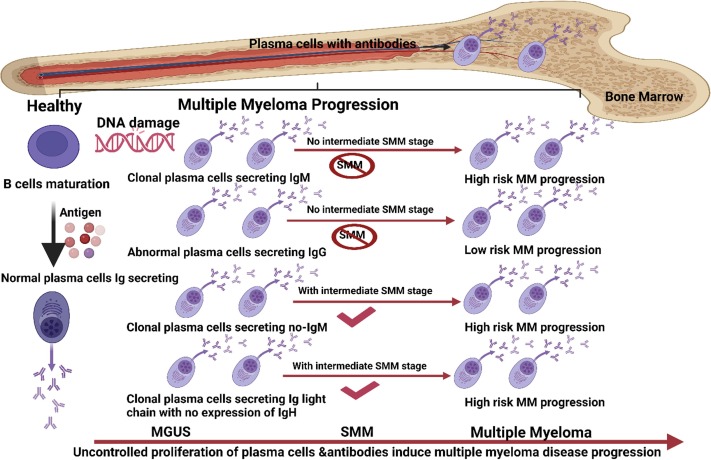
Definition of Vasculitis
Vasculitis is an autoimmune disease characterized by inflammation of blood vessels, which can affect arteries, veins, and capillaries throughout the body. This inflammation leads to swelling and thickening of the vessel walls, restricting or blocking blood flow. As a result, vasculitis can cause damage to various organs and tissues due to insufficient blood supply. The condition can manifest in numerous forms, depending on which blood vessels are affected and the severity of the inflammation.
Possible Causes of Vasculitis
The exact cause of vasculitis is often unknown; however, several potential triggers and underlying conditions have been identified that may lead to its development. These causes can be categorized into primary and secondary vasculitis:
- Primary Vasculitis: This type occurs without any identifiable underlying condition. The immune system mistakenly attacks the blood vessels for reasons that remain unclear.
- Secondary Vasculitis: This type is associated with other diseases or conditions that provoke an inflammatory response in the blood vessels. Some common triggers include:
- Infections: Certain infections can trigger vasculitis as the immune system responds to fight off pathogens. Examples include hepatitis B and C viruses, HIV, and bacterial infections.
- Medications: Some drugs may induce an allergic reaction or hypersensitivity that results in vasculitis. Common culprits include antibiotics (like penicillin), nonsteroidal anti-inflammatory drugs (NSAIDs), and certain medications used for hypertension or seizures.
- Autoimmune Diseases: Conditions such as lupus, rheumatoid arthritis, or Sjögren’s syndrome can lead to secondary vasculitis as they involve abnormal immune responses targeting healthy tissues.
- Environmental Factors: Exposure to certain chemicals or toxins may also contribute to the development of vasculitis in susceptible individuals.
- Genetic Factors: A family history of autoimmune diseases may increase susceptibility to developing vasculitis.
- Other Diseases: Conditions like cancer or inflammatory disorders can also trigger vasculitis through complex immune mechanisms.
Understanding these potential causes is crucial for diagnosis and treatment since managing underlying conditions may help control symptoms and prevent complications associated with vasculitis.
The Mechanism of Vasculitis
The mechanisms underlying vasculitis are complex and multifactorial, often involving immune-mediated processes. Here are the primary mechanisms implicated in the pathogenesis of vasculitis:
- Cell-Mediated Inflammation: This mechanism involves T cells and other immune cells that infiltrate the vessel walls. In conditions such as Giant Cell Arteritis (GCA), T-cell activation plays a crucial role in driving the inflammatory response, leading to damage and necrosis of the vascular tissue.
- Immune Complex-Mediated Inflammation: Immune complexes formed by antibodies binding to antigens can deposit in blood vessel walls, triggering an inflammatory response. This process is particularly relevant in conditions like systemic lupus erythematosus (SLE), where circulating immune complexes can lead to vasculitis.
- Autoantibody-Mediated Inflammation: Certain autoimmune diseases are associated with the production of autoantibodies that target components within blood vessels, contributing to inflammation and damage. For instance, anti-neutrophil cytoplasmic antibodies (ANCA) are implicated in several forms of small-vessel vasculitis, leading to neutrophil activation and subsequent vascular injury.
- Endothelial Cell Activation: A common pathway across various types of vasculitis is endothelial cell activation, which can result from both immune-mediated mechanisms and direct injury from inflammatory mediators. Activated endothelial cells express adhesion molecules that facilitate leukocyte recruitment and promote further inflammation.
- Cytokine Release: The inflammatory process is perpetuated by cytokines released from activated immune cells, which further recruit additional inflammatory cells to the site of injury. This cascade can lead to sustained inflammation and damage to the vascular wall.
- Vascular Dysregulation: Elevated levels of substances such as endothelin-1 have been noted in patients with systemic vasculitides, contributing to vascular dysregulation and complications such as accelerated atherosclerosis.
Overall, these mechanisms interact dynamically, leading to the diverse clinical presentations seen in different forms of vasculitis associated with autoimmune diseases.
Relation Between Antineutrophil Cytoplasmic Antibody (ANCA) and Vasculitis
Overview of ANCA-Associated Vasculitis (AAV)
Antineutrophil cytoplasmic antibody (ANCA)-associated vasculitis (AAV) is a group of rare autoimmune diseases characterized by inflammation of small to medium-sized blood vessels. The presence of ANCAs in the serum is a hallmark of these conditions, which include granulomatosis with polyangiitis (GPA), microscopic polyangiitis (MPA), and eosinophilic granulomatosis with polyangiitis (EGPA). The inflammation caused by AAV can lead to significant organ damage due to ischemia and necrosis resulting from compromised blood flow.
Pathogenic Role of ANCA in Vasculitis
The exact mechanism by which ANCAs contribute to the pathogenesis of vasculitis is not fully understood, but there is substantial evidence suggesting that they play a pathogenic role. ANCAs are autoantibodies that target specific proteins within neutrophils, primarily myeloperoxidase (MPO) and proteinase 3 (PR3). When these antibodies bind to their targets, they activate neutrophils, leading to their adhesion to the endothelium of blood vessels. This process promotes inflammation and tissue damage, contributing to the clinical manifestations of AAV.
Clinical Implications of ANCA Testing
The detection of ANCAs has revolutionized the diagnostic approach for AAV. Serological testing for ANCAs is utilized not only for diagnosis but also for classification purposes. Different patterns of ANCA positivity correlate with distinct clinical presentations and disease courses. For instance, patients with PR3-ANCA often experience more severe disease manifestations compared to those with MPO-ANCA. However, it’s important to note that not all patients with AAV will test positive for ANCAs; approximately 5% may be negative even in cases like GPA.
Monitoring Disease Activity and Treatment Response
While rising titers of ANCAs have been associated with disease relapse in some studies, there remains controversy regarding their utility as a reliable marker for monitoring disease activity or treatment response. Some research indicates that increasing levels of c-ANCA may predict relapses, allowing preemptive treatment strategies; however, other studies have failed to establish a strong correlation between ANCA levels and clinical outcomes.
In summary, the relationship between ANCA and vasculitis lies in the pathogenic role that these autoantibodies play in promoting inflammation and vascular damage, which leads to the clinical features observed in AAV. Their presence serves as both a diagnostic tool and a potential indicator for disease activity, although their reliability in monitoring treatment response continues to be debated.
Classification of Vasculitis
Vasculitis is classified based on the size of the blood vessels that are primarily affected. This classification helps in understanding the specific characteristics, symptoms, and treatment options associated with each type. The main categories of vasculitis include:
1. Large Vessel Vasculitis (LVV)
Large vessel vasculitis involves inflammation of the largest blood vessels in the body, such as the aorta and major arteries. The primary conditions under this category include:
- Giant Cell Arteritis (GCA): Commonly occurs in adults over 50 years old, affecting the temporal artery and can lead to headaches, jaw pain, and vision problems.
- Takayasu Arteritis (TAK): Predominantly affects younger women and involves inflammation of the aorta and its branches, leading to symptoms like arm or leg pain, high blood pressure, and fatigue.
- Aortitis: Inflammation of the aorta that may occur without an identifiable cause or secondary to other autoimmune diseases.
2. Medium Vessel Vasculitis (MVV)
Medium vessel vasculitis affects medium-sized blood vessels including arterioles and smaller veins. Key conditions include:
- Polyarteritis Nodosa: Affects various organs including skin, heart, kidneys, and intestines; it is more common in men aged 45 to 65.
- Kawasaki Disease: Primarily affects children under five years old and can cause serious heart complications if untreated.
3. Small Vessel Vasculitis (SVV)
Small vessel vasculitis targets the smallest blood vessels such as capillaries and venules. It is often mediated by autoantibodies. Types include:
- Anti-neutrophil Cytoplasmic Antibody (ANCA)-associated Vasculitis: Includes conditions like Granulomatosis with Polyangiitis (affecting lungs and kidneys), Microscopic Polyangiitis, and Eosinophilic Granulomatosis with Polyangiitis.
- Immune Complex Small Vessel Vasculitis: Includes conditions such as IgA vasculitis and Cryoglobulinemic vasculitis.
4. Variable Vessel Vasculitis (VVV)
This category includes disorders that can affect blood vessels of any size. Notable examples are:
- Behçet’s Disease: Affects multiple systems including skin, eyes, joints, and vascular systems.
- Cogan’s Syndrome: Characterized by inflammation affecting both eyes and ears along with systemic involvement.
In summary, vasculitis is categorized into large vessel vasculitis, medium vessel vasculitis, small vessel vasculitis, and variable vessel vasculitis based on the size of the affected blood vessels. Each type has distinct clinical features that guide diagnosis and treatment.
Main features of the following Types of vasculitis
1. Polyarteritis Nodosa
Polyarteritis nodosa (PAN) is a systemic vasculitis that primarily affects medium-sized muscular arteries. It is characterized by transmural inflammation of the arterial wall, leading to ischemia and damage to the organs supplied by these vessels. The main features include:
- Clinical Presentation: Patients often present with systemic symptoms such as fever, malaise, weight loss, and myalgias. Localized symptoms depend on the affected organ systems, which can include renal involvement (hypertension or renal failure), gastrointestinal symptoms (abdominal pain), and neurological manifestations (mononeuritis multiplex).
- Pathophysiology: The exact cause remains unclear, but it is thought to involve immune-mediated mechanisms. There may be associations with viral infections (e.g., hepatitis B virus).
- Diagnosis: Diagnosis typically involves a combination of clinical evaluation, imaging studies (angiography showing aneurysms or stenosis), and biopsy of affected tissues.
- Treatment: Corticosteroids are the mainstay of treatment, often combined with immunosuppressive agents like cyclophosphamide in severe cases.
Wegener’s granulomatosis, now more commonly referred to as granulomatosis with polyangiitis (GPA), is a small-to-medium vessel vasculitis characterized by necrotizing granulomatous inflammation. Key features include:
- Clinical Presentation: Symptoms often include respiratory tract involvement (sinusitis, nasal ulcers), renal impairment (glomerulonephritis), and systemic symptoms like fever and fatigue.
- Pathophysiology: GPA is associated with the presence of anti-neutrophil cytoplasmic antibodies (ANCA), particularly perinuclear ANCA (p-ANCA) with myeloperoxidase specificity.
- Diagnosis: Diagnosis relies on clinical findings, serological tests for ANCA, and tissue biopsy showing granulomatous inflammation.
- Treatment: Treatment typically involves high-dose corticosteroids along with immunosuppressive agents such as methotrexate or rituximab.
3. Giant Cell Arteritis
Giant cell arteritis (GCA) is a large vessel vasculitis that primarily affects older adults. Its main features include:
- Clinical Presentation: Common symptoms include headache (often temporal), scalp tenderness, jaw claudication, visual disturbances due to ischemic optic neuropathy, and constitutional symptoms like fever and weight loss.
- Pathophysiology: GCA involves an inflammatory infiltrate in the arterial wall composed mainly of giant cells. The etiology is not fully understood but may involve genetic predisposition and environmental factors.
- Diagnosis: Diagnosis is based on clinical criteria supported by imaging studies such as ultrasound showing halo signs around temporal arteries or biopsy revealing giant cells in the arterial wall.
- Treatment: High-dose corticosteroids are initiated promptly to prevent complications such as blindness.
4. Microscopic Polyangiitis
Microscopic polyangiitis (MPA) is a small vessel vasculitis characterized by necrotizing vasculitis affecting capillaries and venules. Its features include:
- Clinical Presentation: MPA commonly presents with renal involvement leading to rapidly progressive glomerulonephritis, pulmonary hemorrhage, skin lesions such as purpura, and peripheral neuropathy.
- Pathophysiology: Like GPA, MPA is associated with p-ANCA antibodies but typically lacks granulomatous inflammation.
- Diagnosis: Diagnosis involves clinical assessment combined with laboratory tests for ANCA and kidney biopsy demonstrating necrotizing glomerulonephritis without significant immune complex deposition.
- Treatment: Treatment usually consists of corticosteroids combined with immunosuppressants like cyclophosphamide or rituximab.
5. Thromboangitis Obliterans
Thromboangitis obliterans (Buerger’s disease) primarily affects small to medium-sized arteries and veins in the limbs. Key features include:
- Clinical Presentation: Symptoms often manifest as claudication in the extremities due to ischemia; patients may also experience rest pain or ulcerations. It predominantly occurs in young male smokers.
- Pathophysiology: The exact cause remains unknown but smoking is a significant risk factor. It involves inflammatory thrombus formation leading to vascular occlusion.
- Diagnosis: Diagnosis is based on clinical history emphasizing tobacco use alongside angiographic findings showing segmental occlusions without atherosclerosis.
- Treatment: The most effective treatment is complete cessation of smoking; other treatments focus on managing symptoms and improving blood flow through medications or surgical interventions if necessary.
6. Kawasaki Disease
Kawasaki disease is an acute febrile illness primarily affecting children under five years old. Its main features include:
- Clinical Presentation: Symptoms include prolonged fever lasting more than five days, conjunctival injection, oral mucosal changes (strawberry tongue), rash, cervical lymphadenopathy, and palmoplantar erythema.
- Pathophysiology: The etiology remains unclear but may involve infectious triggers leading to an exaggerated immune response causing vasculitis affecting coronary arteries among others.
- Diagnosis: Diagnosis relies on clinical criteria including fever lasting at least five days plus four out of five principal clinical features mentioned above.
- Treatment: Intravenous immunoglobulin (IVIG) along with aspirin are used to reduce inflammation and prevent coronary artery aneurysms.







